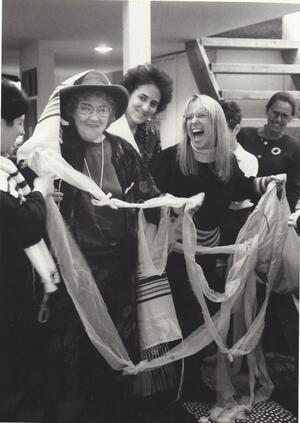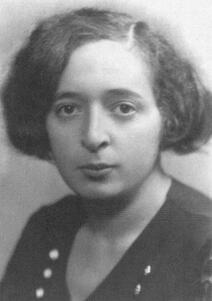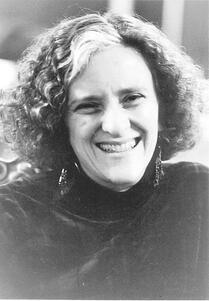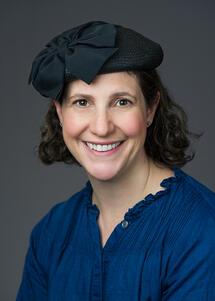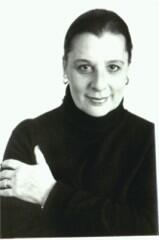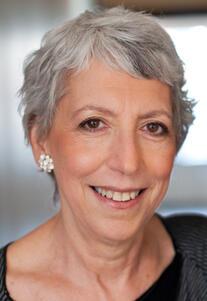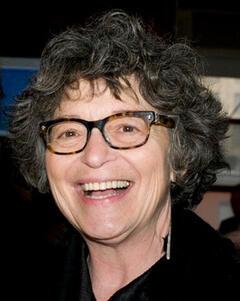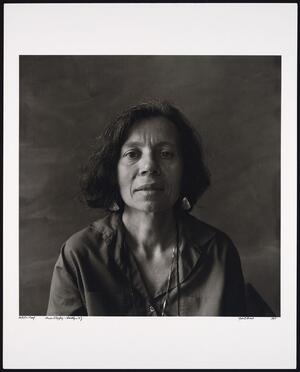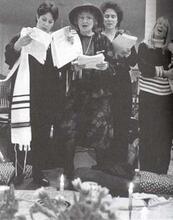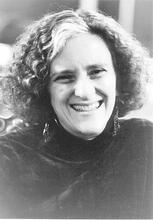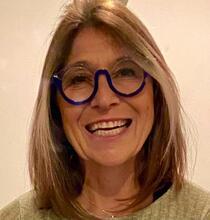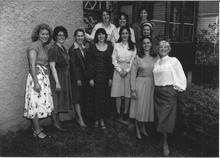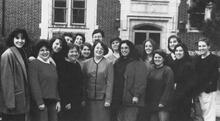Jewish Feminism in the United States
This article offers an overview of Jewish feminism in the United States since the 1970s, in particular the religious dimensions of this transformative social movement. It includes the histories of Jewish feminists who fought for women’s inclusion in Judaic leadership and practice; who created feminist liturgy, texts, and ritual; who asserted their intersectional identities as Jewish LGBTQ+, Mizrahi/Sephardi, and/or Jewish women of color feminists; and who fought against the marginalization and abuse of women in Jewish institutions.
Introduction
Challenging all varieties of American Judaism, feminism has been a powerful force for popular Jewish religious revival. The accomplishments of Jewish feminists have transformed American Jewish life, even as the ultimate goal of gender equity and shared power has yet to be fully realized. In contrast to the past, girls are now welcomed into the Jewish community with impressive ceremonies that celebrate their birth, they are as likely to celebrate coming-of-age milestones as their male peers, and they are being educated Jewishly at virtually the same rate as boys. Women have been ordained as clergy within all denominations of American Judaism (though not all Orthodox authorities accept this development). Feminist scholarship has begun to recover the previously ignored experience of Jewish women and has offered new perspectives for the interpretation of classical Jewish texts. Although men still predominate in positions of authority within American Jewish organizations, feminist leaders work tirelessly to bring issues of gender justice to the forefront of the communal agenda.
Origins of the Jewish Feminist Movement
In the latter half of the twentieth century, a grass-roots movement of Jewish feminism sparked a move toward gender equality in the American Jewish community. Many Jewish women participated in what has been called the second wave of American feminism that began in the 1960s. Most did not link their feminism to their religious or ethnic identification. But some women, whose Jewishness was central to their self-definition, naturally applied their newly acquired feminist insights to their condition as American Jews. Looking at the all-male Lit. "elevated place." Platform in the synagogue on which the Torah reading takes place.bimah (stage) in the synagogue, they experienced the feminist “click”—the epiphany that things could be different—in a Jewish context. Two articles in particular pioneered feminist analysis of the status of Jewish women. In the fall of 1970, Trude Weiss-Rosmarin criticized the liabilities of women in Jewish law in her “The Unfreedom of Jewish Women,” which appeared in the Jewish Spectator, the journal she edited. Several months later, Rachel Adler, then an Orthodox Jew, published a blistering indictment of the status of women in Jewish tradition in Davka, a countercultural journal. Adler’s piece was particularly influential for young women active in the Jewish counterculture of the time.
In the early 1970s, Jewish feminism moved beyond consciousness-raising discussion groups and collectives to challenge established Jewish institutions and practices. Calling themselves Ezrat Nashim, a small study group of young feminists associated with the New York Havurah, a countercultural fellowship designed to create an intimate community for study, prayer, and social action, took the issue of equality of women to the 1972 convention of the Conservative Rabbinical Assembly. The founding members of Ezrat Nashim represented the highly educated elite of, primarily, Conservative Jewish youth. (Several of them, such as Paula Hyman, Elizabeth Koltun, Arlene Agus, and Martha Ackelsberg contributed to the development of Jewish feminist writing for decades. Other founding members were Dina Rosenfeld, Maureen McCleod, Leora Fishman, and Betty Braun. Joining Ezrat Nashim in its early activist years were Toby Reifman and feminist scholars Judith Hauptman and Judith Plaskow.)
In separate meetings with rabbis and their wives, the women of Ezrat Nashim issued a “Call for Change” that put forward the early agenda of Jewish feminism. That agenda stressed the “equal access” of women and men to public roles of status and honor within the Jewish community. It focused on eliminating the subordination of women in Judaism by equalizing their rights in marriage and divorce laws, counting them in the The quorum, traditionally of ten adult males over the age of thirteen, required for public synagogue service and several other religious ceremonies.minyan (the quorum necessary for communal prayer), and training them for positions of leadership in the synagogue as rabbis and cantors. In recognition of the fact that the secondary status of women in Jewish law rested on their exemption from certain A biblical or rabbinic commandment; also, a good deed.mitzvot (commandments), the statement called for women to be obligated to perform all mitzvot on the same level as men. Ezrat Nashim caught the eye of the New York press, which widely disseminated the demands of Jewish feminism.
Jewish feminism found a receptive audience. In 1973, secular and religious Jewish feminists, under the auspices of the North American Jewish Students’ Network, convened a national conference in New York City that attracted more than five hundred participants. A similarly vibrant conference the following year led to the formation of a short-lived Jewish feminist organization. Although Jewish feminists did not succeed in establishing a comprehensive organization, they were confident that they spoke for large numbers of women (and some men) within the American Jewish community.
Early Strategies of Jewish Feminists

Founder and editor of Lilith, the "independent Jewish women's magazine," Susan Weidman Schneider is devoted to the many causes of concern to Jewish women and to highlighting the unique challenges and possibilities facing those who make a commitment to both Judaism and feminism. Photograph by Joan Roth.
Institution: Lilith
Feminists used a number of strategies to bring the issue of gender equality before the Jewish community. Feminist speakers presented their arguments from the pulpit in countless synagogues and participated in lively debates in Jewish community centers and local and national meetings of Jewish women’s organizations. Jewish feminists also brought their message to a wider public through the written word. Activists from Ezrat Nashim and the North American Jewish Students’ Network published a special issue of Response magazine, devoted to Jewish feminism, in 1973. With Elizabeth Koltun as editor, a revised and expanded version, entitled The Jewish Woman: New Perspectives, appeared in 1976. That year, Lilith, a Jewish feminist magazine, was established by Susan Weidman Schneider and Aviva Cantor; Schneider has served as its editor since that time. Lilith combines news of interest to Jewish women with articles and reviews of new publications, bringing to a lay audience the latest Jewish feminist research in a popular form.
The very lack of formal Jewish feminist organizational structures in the early years allowed for grass-roots efforts across the country. In 1977, for example, Irene Fine of San Diego, California, established the Woman’s Institute for Continuing Jewish Education. Not only did this organization regularly bring speakers and artists to southern California, it also published collections of women’s rituals and Jewish women’s interpretations of Jewish texts.
Through their publications and speaking engagements, Jewish feminists gained support. Their innovations—such as baby-naming ceremonies, feminist A seven-day festival to commemorate the Exodus from Egypt (eight days outside Israel) beginning on the 15th day of the Hebrew month of Nissan. Also called the "Festival of Mazzot"; the "Festival of Spring"; Pesah.Passover Lit. "order." The regimen of rituals, songs and textual readings performed in a specific order on the first two nights (in Israel, on the first night) of Passover.seders, and ritual celebrations of The new moon; the first day of the month; considered a minor holiday, especially for women.Rosh Hodesh (the new month, traditionally deemed a woman’s holiday)—were introduced into communal settings, whether through informal gatherings in a home or in the synagogue. In a snowball process, participants in the celebration of new rituals spread them through word of mouth. Aimed at the community rather than the individual, new feminist celebrations designed to enhance women’s religious roles were legitimated in settings that became egalitarian through the repeated performance of these new rituals. Indeed, one of the major accomplishments of Jewish feminism was the creation of communities that modeled egalitarianism for children and youth.
Religious Leadership in the Reform, Reconstructionist, and Conservative Movements: Ordaining Women as Rabbis and Cantors
The concept of egalitarianism resonated with many American Jews, who recognized that their own acceptance as citizens was rooted in Enlightenment views of the fundamental equality of all human beings. With growing acceptance of women in all the professions, the Reform Movement, which rejected the authority of The legal corpus of Jewish laws and observances as prescribed in the Torah and interpreted by rabbinic authorities, beginning with those of the Mishnah and Talmud.halakhah (Jewish law), acted on earlier resolutions that had found no obstacles to women serving as rabbis. Hebrew Union College, the seminary of the Reform Movement, ordained the first female rabbi in America, Sally Priesand, in 1972, and graduated its first female cantor in 1975. The Reconstructionist Movement followed suit, ordaining Sandy Eisenberg Sasso as rabbi in 1974. Although the issue of women’s ordination was fraught with conflict for the Conservative Movement, it, too, responded to some feminist demands. In 1973, the Committee on Jewish Law and Standards of the Conservative Rabbinical Assembly ruled that women could be counted in a minyan as long as the local rabbi consented. And the 1955 minority decision permitting women to receive Lit. "ascent." A "calling up" to the Torah during its reading in the synagogue.aliyot was widely disseminated, leading to a rapid increase in the number of congregations willing to call women to the Torah she-bi-khetav: Lit. "the written Torah." The Bible; the Pentateuch; Tanakh (the Pentateuch, Prophets and Hagiographia)Torah.
It took longer for women to be ordained as clergy in the Conservative Movement, then the largest denomination within American Judaism. Because the Conservative Movement considers halakhah binding but also acknowledges that Jewish law is responsive to changing social conditions and concepts, the decision to ordain women as rabbis and invest them as cantors had to be justified in halakhic terms. The combined impact of American and Jewish feminism on Conservative congregations and their rabbis led to a decision by the movement in 1977 to establish a national commission to investigate the sentiment of Conservative Jews on the issue. Holding meetings throughout the country, members of the commission heard the anguished testimony of women who felt ignored in public Jewish life, as well as statements of men offering their support. Although it took note of the arguments against ordination, in its report submitted early in 1979, the commission recommended the ordination of women.
The divisions within the Conservative Movement and among the faculty of the Jewish Theological Seminary, the movement’s educational institution responsible for the training of rabbis, led to the tabling of the issue, but it would not disappear. With strong support from the Rabbinical Assembly and ultimately from Chancellor Gerson Cohen, and after consideration of faculty position papers supporting and opposing women as rabbis, the faculty of the seminary voted in October 1983 to accept women into the rabbinical school as candidates for ordination. Amy Eilberg, who had completed most of the requirements for ordination as a student in the seminary’s graduate school, became the first female Conservative rabbi in 1985. Women were welcomed into the Conservative cantorate in 1987.
Orthodox Feminism
Feminism has also transformed Orthodox Judaism in the United States. With her eloquent 1981 book On Women and Judaism, Blu Greenberg emerged as the “foremother” of Orthodox Jewish feminism as she encouraged Orthodox Jewish women to take on new leadership roles while adhering to Jewish law. The self-empowerment of Orthodox feminists became particularly visible with the establishment of JOFA, the Jewish Orthodox Feminist Alliance. Founded in 1997, it continues to advocate for “for expanding women’s rights and opportunities within the framework of halakha” while building “a vibrant and equitable Orthodox community.” JOFA holds international biannual conferences that regularly draw hundreds of participants, promotes Jewish feminist scholarship through the JOFA Journal (established in 1998), and distributes guidebooks on incorporating feminist practices into Orthodox Jewish rituals and lifecycle events. JOFA’s blog, webinars, speaker’s bureau, and active schedule of events ensure that Jewish feminist scholarship—and Jewish women scholars—have a dynamic voice in the Orthodox Jewish community. While JOFA continues to push the envelope, feminist rituals such as celebrations of the birth of a daughter and acknowledgement of the Lit. "daughter of the commandment." A girl who has reached legal-religious maturity and is now obligated to fulfill the commandmentsbat mitzvah milestone have become routine within Orthodox communities.
A crucial area in which Orthodox feminists have secured greater opportunities for participation and leadership is within the context of Jewish prayer. The first women’s-only Prayertefillah took place at the modern Orthodox Lincoln Square synagogue during the holiday of Lit. "rejoicing of the Torah." Holiday held on the final day of Sukkot to celebrate the completing (and recommencing) of the annual cycle of the reading of the Torah (Pentateuch), which is divided into portions one of which is read every Sabbath throughout the year.Simhat Torah, and by the late 1970s, a network of women’s tefillah groups offered Orthodox feminists the chance to lead services and read publicly from the Torah in gatherings without men. By the early twenty-first century, however, many Orthodox feminists shifted from advocating for separate, women-only prayer services to a “partnership” model. Partnership minyanim maximize the leadership roles women can take in a mixed-gender setting within the boundaries Orthodox interpretations of halakhah. Women in partnership minyanim routinely chant from the Torah, receive aliyot, and lead selected sections of the prayer service—roles that had customarily not been offered to women in Orthodox congregations in spite of the strong halakhic case for their permissibility. The first partnership minyanim to meet on a regular basis started in 2002 in New York and Jerusalem; these minyanim have since spread to many Orthodox Jewish communities in the United States and around the world.
Educational opportunities for Orthodox women have also increased dramatically since the late twentieth century. In many modern Orthodox day schools, it is standard for girls to study Talmud and Jewish law, areas once restricted only to boys and men. Founded in New York City in 1979, The Drisha Institute for Jewish Education became the first institution to offer women access to modes of advanced Talmudic study and training in halakhah that previously had only been available to Jewish men in Orthodox Yeshivot and Kollels (institutes for full-time study of Talmud). Today, a number of Orthodox institutions have joined Drisha in offering women this training, including GPATS, the Graduate Program of Advanced Talmudic Studies at Yeshiva University, the flagship institution of Modern Orthodox Judaism.
Orthodox Jewish women have also taken on leadership roles as clergy and as advisors on Jewish law. Rabba Sara Hurwitz was privately ordained in 2009 after graduating from an advanced course of Talmud study at Drisha and completing her rabbinic training with Rabbi Avi Weiss, an architect of the “Open Orthodox” branch of the Orthodox movement that advocates for flexible interpretations of Jewish law and the enhanced participation and leadership of Orthodox Jewish women. Together, Rabba Hurwitz and Rabbi Weiss founded Yeshivat Maharat in New York City, the first Orthodox institution in the United States to ordain women as clergy. While not all the ordained graduates of Yeshivat Maharat adopt the title of rabbi—some have chosen instead to take the title of Rabba, Rabbanit, or Maharat in order to minimize the controversies associated with their ordination—they have served as congregational leaders of Open Orthodox synagogues, teachers in Orthodox day schools, and hospital clergy. Other Orthodox women have taken on leadership roles not as clergy but as yoaztot halakhah, advisors in Jewish law. Nishmat, an educational center in Israel, trains yoatzot halakhah to offer Orthodox women advice on Jewish laws pertaining to menstruation and sexuality, an area women often find uncomfortable to discuss with male rabbinic authorities. Many of the graduates of this program go on to share their expertise with Orthodox communities in the United States.
Beyond Equal Access
While much of American Jewish feminism has focused on opening more religious opportunities to women, Jewish feminists have also raised issues that go beyond the acceptance of women into male-defined positions of visibility and power. Since the 1980s, some strands of Jewish feminism worked to reshape the nature of Jewish leadership and ritual rather than simply follow traditional male models. Jewish feminists sought to incorporate women’s voices and insights into Jewish liturgy and into the interpretation of classical Jewish texts. They created feminist versions of the siddur (the prayer book) and the A seven-day festival to commemorate the Exodus from Egypt (eight days outside Israel) beginning on the 15th day of the Hebrew month of Nissan. Also called the "Festival of Mazzot"; the "Festival of Spring"; Pesah.Passover The "guide" to the Passover seder containing the Biblical and Talmudic texts read at the seder, as well as its traditional regimen of ritual performances.Haggadah. They also created feminist midrash, interpretation of biblical and talmudic texts. Scholar-activists such as Judith Plaskow, Rachel Adler, and Ellen Umansky challenged the male-dominated concepts of Jewish theology and God-language that drew primarily upon masculine imagery and perspectives. Poet and Hebrew scholar Marcia Falk created blessings that supplant traditional liturgy with innovative forms that introduce feminist concepts, using a subversion of hierarchy and naturalistic images of God gendered in Hebrew in the female. By the 1990s, the Reconstructionist and Reform movements had incorporated feminist liturgy and God language into their siddurim, while the Conservative movement’s prayerbooks offer the option of including the names of matriarchs along with patriarchs in their liturgy.
By the 1990s, an informal network of Jewish feminist leaders also helped publicize and institutionalize the innovations of Jewish feminism. The establishment in 1991 of the Jewish Feminist Center in Los Angeles was made possible by a gift from the Nathan Cummings Foundation at the direction of Rabbi Rachel Cowan, its Jewish life officer. The funds were donated to the regional office of the American Jewish Congress, whose director was Rabbi Laura Geller. Geller conveyed this financial support to Rabbi Sue Levi Elwell, who became the founding director of the center. The center became the headquarters for a range of adult education courses on Judaism from a feminist perspective. Because it succeeded in acquiring accreditation for its courses from the Los Angeles Bureau of Jewish Education, which supervises the continuing professional education of teachers in Jewish schools, the Jewish Feminist Center had a significant impact on the Jewish education of children and youth.
In 1995, the Jewish Women’s Archive, another groundbreaking Jewish feminist institution, transformed Jewish education and scholarship by highlighting, collecting, exhibiting, and circulating the stories of Jewish women. Founded by Gail Reimer Twersky and chaired by Jewish feminist philanthropist Barbara Dobkin, JWA helped ensure that women would always be included within popular narratives of Jewish history. At a moment when the internet had yet to reach a wide-ranging audience, the founders understood its potential to render the experiences of Jewish women accessible to the broader public.
Jewish feminist institutions also brought new dimensions to Jewish ritual and practice. In 1994, Elwell was hired to serve as rabbinic director for Ma’yan, the Jewish Women’s Project of the JCC in Manhattan, founded by Barbara Dobkin who served as its executive director. Like the Jewish Feminist Center, Ma’ayan sponsored a range of educational and spiritual events for Jewish women that included “study, ritual and celebration, research, advocacy, community building, and tzedaka” (Ma’yan 1996). It became best known for the feminist Lit. "order." The regimen of rituals, songs and textual readings performed in a specific order on the first two nights (in Israel, on the first night) of Passover.seders it sponsored, led by composer and singer Debbie Friedman, which regularly drew hundreds of participants. Ma’yan disbanded in 2012, its leaders having recognized that its mission of incorporating feminist rituals within Judaic practice had become commonplace within many congregations, schools, and Jewish community centers. And the online resource ritualwell.org—created in 2001 by Ma’yan and Kolot: Center for Jewish Women’s and Gender Studies at the Reconstructionist Rabbinical College—continues to ensure broad access to thousands of feminist Jewish rituals.
Other institutions have since picked up the mantle of fostering innovative Jewish feminist ritual, religious leadership, and practice. In 2005, for instance, Rabbi Jill Hammer (formerly a leader of Ma’ayan) and Taya Ma Shere founded the Kohenet Priestess Institute, which trains and ordains Jewish spiritual leaders immersed in “embodied, earth based, feminist practice.” Graduates of their three-year ordination program are trained in Jewish feminist leadership and the creation of ritual and ceremony. They are known in their communities by the title of “Kohenet,” or priestess.
LGBTQ+ Jewish Feminism
Jewish lesbians played a foundational and vital role in Jewish feminism. During the years of the women’s liberation movement, the New York-based Jewish lesbian collective Di Vilde Chayes (Yiddish for “the Wild Beasts”) explored the complexities of having their Jewishness erased in lesbian, feminist communities and their identities as women and lesbians devalued and suppressed in Jewish ones. Members of Di Vilde Chayes, including poet Adrienne Rich, Yiddishist Irena Klepfisz, scholar Evelyn Torton Beck, and activist Melanie Kaye/Kantrowitz emerged as prominent feminist leaders, public intellectuals, and activists both inside and outside the Jewish community. The 1982 anthology Nice Jewish Girls, edited by Beck and including contributions from nearly all of Di Vilde Chayes, became a classic statement of lesbian issues within the Jewish feminist movement and a powerful assertion of lesbian feminist identity.
Joining the Di Vilde Chayes’ insights on the identities of secular Jewish lesbian feminists were religious lesbian and trans feminists who revitalized Judaism by bringing their LGBTQ+ identities to the fore. In 1997, Reconstructionist Rabbi and Jewish studies scholar Rebecca Alpert explored the religious dimensions of Jewish lesbianism in Like Bread on the Seder Plate. Rabbi Sharon Kleinbaum, the longtime rabbi of Congregation Beth Simchat Torah, New York’s LGBTQ synagogue, emerged as a prominent spiritual leader and activist in the Jewish community, pioneering a vision of Jewish life that incorporated people of all sexual orientations and gender identities. Jewish trans feminists such as theologian Joy Ladin and activist Abby Stein use their platforms to educate Jews and others about trans-inclusive feminist values beyond the gender binary.
Sephardi and Mizrahi Feminism
Feminism has been a force for dynamic innovation not only within the communities created by Jews of European origin and their descendants, including most of North and South American Jewry.Ashkenazi American Jews, but also within Descendants of the Jews who lived in Spain and Portugal before the explusion of 1492; primarily Jews of N. Africa, Italy, the Middle East and the Balkans.Sephardic and Lit. "Eastern." Jew from Arab or Muslim country.Mizrahi Jewish communities whose disparate traditions originated in the Iberian Peninsula, North Africa, and the Middle East. Ceremonies that have become standard among American Jews, such as baby-naming celebrations for newborn girls, originated in Sephardi and Mizrachi communities before being adopted by Ashkenazi Jewish feminists. Meanwhile, egalitarian prayer groups following Sephardic and Mizrachi liturgy and traditions have cropped up in the Bay Area, Seattle, Los Angeles, Manhattan, and Jerusalem. Rabbi Tsipi Gabai, ordained in 2003 and the descendent of a long line of Moroccan rabbis, has been a pioneer in establishing gender-inclusive prayer communities that follow Sephardi and Mizrahi custom. In 1998 Gabai founded an annual egalitarian Sephardi The Day of Atonement, which falls on the 10th day of the Hebrew month of Tishrei and is devoted to prayer and fasting.Yom Kippur service in the Bay Area. In 2019, she established Zohar Yisrael, an egalitarian Sephardic congregation where she serves as rabbi. Sephardi and Mizrahi feminists who follow strict interpretations of halakhah have also begun thinking about how to increase women’s leadership and participation within the boundaries of their traditions’ interpretations of Jewish law, which often differ from Ashkenazi interpretations. Loolwa Khazoom’s The Flying Camel, published in 2003, became an indispensable resource as it shared the stories of dynamic Sephardi and Mizrahi feminists in the United States and beyond.
Jewish Women of Color
Black Jewish feminists Yavilah McCoy and April Baskin, members of the Women’s March Steering Committee, speaking at the 2019 Women’s March.
The activist and spiritual leadership of Jewish women of color—a category that can include Sephardic and Mizrahi Jewish women as well as Jewish women of African, Latinx, Asian, and Native descent—has also been a vital and revitalizing force in American Jewish life. This became particularly apparent during the 2019 Women’s March. When established Jewish communal organizations withdrew from the march over accusations of antisemitism, many progressive Jewish leaders maintained that in spite of some legitimate criticism, the intersectional, anti-racist, and feminist principles animating the march were well worth supporting. Under the banner “Jewish Women of Color Marching,” a coalition of Jewish women of color organized a powerful Jewish presence at the 2019 gathering, while Black-Jewish activists Yavilah McCoy and April Baskin joined the Women’s March steering committee. When Yavilah McCoy addressed the march, she greeted the crowd of thousands with a resounding “Shabbat Shalom,” asserting the importance of Jewishness in racially diverse feminist spaces.
Rabbi Angela Warnick Buchdahl’s Yom Kippur sermon, September 2020, “We Are Family: Rethinking Race in the Jewish Community.”
Jewish women of color who joined the rabbinate have also become some of the most dynamic spiritual leaders in American Judaism. In 2014, for instance, Rabbi Angela Buchdal—the first Asian-American rabbi and cantor—also became both the first woman and the first Asian-American to hold the senior rabbinate position at the venerable Central Synagogue in New York City. During the high holidays of 2020, in the midst of the Covid pandemic and a searing reckoning on American racism spurred on by the Black Lives Matter movement, her sermon exploring the exclusions faced by Jews of color within a white-dominated American Jewish community reached tens of thousands of views on social media and sparked important conversations about racial inclusion in American Jewish life. Other Jewish women of color who have strengthened their Jewish communities through rabbinic leadership are Rabbi Sandra Lawson, the inaugural director of racial diversity, equity and inclusion at Reconstructing Judaism, and Rabbi Mira Rivera, the first Filipino-American woman to be ordained by the Jewish Theological Seminary. Among her many spiritual and activist endeavors, Rabbi Rivera serves as the rabbinic mentor at Ammud, the Jews of Color Torah academy.
Continuing Challenges
Despite the tremendous accomplishments of American Jewish feminism, it has not achieved all its goals. Aspects of halakhah still victimize Jewish women who adhere to it. For instance, some Orthodox men use their privilege in Jewish divorce law to extort large sums from their wives or leave them Woman who cannot remarry, either because her husband cannot or will not give her a divorce (get) or because, in his absence, it is unknown whether he is still alive.agunot (deserted wives), unable to remarry according to Jewish law.
Although women are more visible and wield more power in the institutions of the Jewish community than ever before, they have not yet attained parity. Jewish women have shattered numerous glass ceilings, such as when Rabbi Joy Levitt signed on as the first woman president of the Reconstructionist Rabbinical Association in 1987, Rabbi Deborah Waxman became the first woman and lesbian to become president of Reconstructionist Rabbinical College in 2014, and Dr. Shuly Rubin Schwartz stepped up as the first woman to serve as Chancellor of the Jewish Theological Seminary in 2018. But while the number of women ordained at liberal Jewish seminaries now equals or exceeds the number of men, women still lag behind men in securing positions as senior rabbis in large and prestigious congregations. Many prominent congregations refrain from considering female candidates when they search for a rabbi.
Men continue to be overrepresented in power and leadership in secular Jewish organizations as well. In 1972, at the General Assembly of the Council of Jewish Federations, the umbrella organization of Jewish communal life, Jacqueline Levine, a vice president of the council, spoke passionately to the assembled delegates of the need to include women in the decision-making of the Jewish community: “We are asking … to be treated only as human beings, so that we may be … participants in the exciting challenge of creating a new and open and total Jewish community” (Response 1973: 65). Twenty years later she concluded sadly that “tokenism is and will continue to be the name of the game” (Fishman 219). Although more women are holding influential positions Jewish communal institutions than ever before—including Rabbi Joy Levitt, CEO of the Manhattan JCC from 2007 to 2014, and Jennifer Gorovitz, who became the first woman to hold the top executive position of the San Francisco Federation in 2010—men predominate in the top positions, especially in the largest communities. As of 2015, 70-80% of Jewish federation employees were women, but the leadership was still in the hands of men. Forty percent of Jewish federations around the United States and Canada are led by women, but among the major federations with the largest budgets, the number is only 9%. Many Jewish federations around the country have never hired a woman president. In the early 2000s, the anonymous Jewish feminist collective “Jewish Women Watching”—modeled after the “guerrilla girls” who used creative stunts to denounce sexism in the world of visual art—used their platform to speak out against these systemic issues, often showing up in disguise and distributing anonymous messages to condemn lingering gender inequality in American Jewish life.
In the American Jewish community as well as in the larger society, prominent male leaders have abused their power over women through sexual assault and harassment. In 1998, Lilith magazine told the stories of the many women and girls who had been sexually abused by Rabbi Shlomo Carlebach, the charismatic musician and spiritual leader who had been a fixture of the Jewish counterculture and a tremendous influence in liberal and Orthodox Jewish communities. In later years, and particularly after the #MeToo movement exposed the rampant sexual assault faced by women around the country and throughout the world, it was revealed that numerous prominent rabbis had abused their spiritual authority and engaged in sexually predatory behavior. Investigations raised questions about whether the institutional bodies of American Judaism adequately protected Jewish women from their abuse.
The Jewish community embarked more fully upon a #MeToo reckoning beginning in 2018, when Dr. Keren McGinity, a scholar of American Jewish studies, spoke out publicly against the sexual assault she experienced at the hands of Steven M. Cohen, a renowned male sociologist who served as a gatekeeper in the field of American Jewish studies. Eight more women soon spoke up about Cohen’s recurrent predatory behavior. The following year, Jewish communal professional Sheila Katz spoke out about the harassment she had experienced at the hands of Michael Steinhardt, a leading megadonor in the Jewish community.
These revelations prompted feminist academics to interrogate the communal policies promoted by Cohen and funded by Steinhardt. Jewish feminists had long complained that the so-called “crisis of Jewish continuity,” a concept that had been developed and promoted by Cohen and enshrined into policy by Jewish communal leaders and donors for decades, demeaned Jewish women by encouraging them to prioritize birthing Jewish babies over investing in their potential as intellectual, spiritual, and cultural leaders. The #MeToo movement sparked further critical conversation about the ways these policies reflect power disparities in the organized Jewish community and harm Jewish women. In both scholarly journals and the popular press, feminist scholars like Lila Corwin Berman, Kate Rosenblatt, and Ronit Stahl examined how a communal agenda aimed at regulating Jewish women’s sexuality and reproductive capacity contributed to an environment ripe for harassment and abuse.
In spite of these and other continuing challenges, Jewish feminists persist in their leadership and activism. They are animated by the vision of a diverse and inclusive Jewish community, sustained by Jews of all genders, races and backgrounds sharing responsibility and power.
Adler, Rachel. Engendering Judaism: An Inclusive Theology and Ethics. Philadelphia: Jewish Publication Society, 1998.
Alpert, Rebecca. Like Bread on the Seder Plate. New York: Columbia University Press, 1998.
Antler, Joyce. Jewish Radical Feminism. New York: New York University Press, 2018.
Baskin, April, Yavilah McCoy, and Abby Stein. “The Women’s March,” Judaism Unbound, #155 (February 2019)
Beck, Evelyn Torton, ed. Nice Jewish Girls: A Lesbian Anthology. Watertown, MA: Persephone Press, 1982.
Beck, Evelyn Torton. “The Politics of Jewish Invisibility.” National Women's Studies Association Journal 1, no. 1 (1988).
Berman, Lila Corwin, Kate Rosenblatt, and Ronit Stahl. “How Jewish Academia Created a #MeToo Disaster.” Forward, July 19, 2018.
Berman, Lila Corwin, Kate Rosenblatt, and Ronit Stahl. “Continuity Crisis: The History and Sexual Politics of an American Jewish Communal Project.” American Jewish History, 104, 2-3 (2020): 169-194.
Eliassian, Shira. “The Sephardi Feminism Series,” JOFA blog (2017).
Falk, Marcia. The Book of Blessings: A Feminist-Jewish Reconstruction of Prayer, New York: Harper Collins, 1996.
Fishman, Sylvia Barack. A Breath of Life: Feminism in the American Jewish Community. New York: Free Press, 1993.
Ganzel, T., & Zimmerman, D. R. “Women as Halakhic Professionals: The Role of the Yo'atzot Halakhah.” Nashim: A Journal of Jewish Women's Studies & Gender Issues 22, 1 (2011): 162-171.
Greenberg, Blu. On Women and Judaism, Philadelphia: Jewish Publication Society of America, 1979.
Heschel, Susannah, ed. On Being a Jewish Feminist: A Reader. New York: Schocken Books, 1983.
Hyman, Paula E. “Ezrat Nashim and the Emergence of a New Jewish Feminism.” In The Americanization of the Jews, edited by Robert M. Seltzer and Norman J. Cohen, New York: NYU Press, 1995.
Jaffee, Maayan. “Gender Equity in the Jewish Non-Profit? Progress Being Made.” EJewishPhilanthropy.com, March 8, 2015.
JOFA Journal.
Kaplowitz, William. “Partnership Minyanim in the United States: Planning Theory in Action,” MA Thesis: University of Michigan, 2008.
Kaye/Kantrowitz, Melanie, and Irena Klepfisz, eds. The Tribe of Dina: A Jewish Women’s Anthology. Boston: Beacon Press, 1986.
Khazzoom, Loolwa, ed. The Flying Camel: Essays on Identity by Women of North African and Middle Eastern Jewish Heritage. New York: Seal Press, 2003.
Koltun, Elizabeth, ed. The Jewish Woman: New Perspectives. New York: Schocken Books, 1976.
Ladin, Joy. Through the Door of Life: A Jewish Journey Between Genders, Madison: University of Wisconsin Press, 2013
Ladin Joy. “Diving into the Wreck: Trans and Anti-Trans Feminism.” EOAGH (2017)
Lerner, Anne Lapidus. “Who Hast Not Made Me a Man: The Movement for Equal Rights for Women in American Jewry.” AJYB (1977): 3–38.
Lipstadt, Deborah. “Feminism and American Judaism,” Women and American Judaism, edited by Pamela Nadell and Jonathan Sarna, Waltham: Brandeis University Press, 2001, 291-308.
Lilith Magazine
McGinity, Keren. “American Jewry’s #MeToo Problem: A First Person Encounter.” The Jewish Week, June 21, 2018.
Nadell, Pamela Susan. Women Who Would Be Rabbis: A History of Women’s Ordination, 1889-1985. Boston: Beacon Press, 1998.
Plaskow, Judith. Standing Again at Sinai: Judaism from a Feminist Perspective. 1st ed. San Francisco: Harper & Row, 1990.
Plaskow, Judith, and Donna Berman. The Coming of Lilith: Essays on Feminism, Judaism, and Sexual Ethics, 1972-2003. Boston: Beacon Press, 2005.
Reimer, Gail Twersky. “Remarks Delivered Upon the Receiving the Lee Max Friedman Award at the American Jewish Historical Society’s 2014 Biennial Scholar’s Conference.” American Jewish History 99, 1 (2015): 93-98.
Response (Summer 1973).
Schneider, Susan Weidman. Jewish and Female. New York: Simon and Schuster, 1984.
Stein, Abby. Becoming Eve. New York: Seal Press, 2019.
Umansky, Ellen. “Creating a Jewish Feminist Theology.” In Weaving the Visions: New Patterns in Feminist Spirituality, edited by Judith Plaskow and Carol P. Christ. New York: Harper Collins, 1989.
Umansky, Ellen. “(Re)Imaging the Divine.” Response 13, 1–2 (Fall–Winter 1982): 110–119.
Wenger, Beth. “The Politics of Women’s Ordination: Jewish Law, Institutional Power, and the Debate over Women in the Rabbinate.” In Tradition Renewed: A History of the Jewish Theological Seminary of America, edited by Jack Wertheimer. New York: Jewish Theological Seminary of America, 1997.

